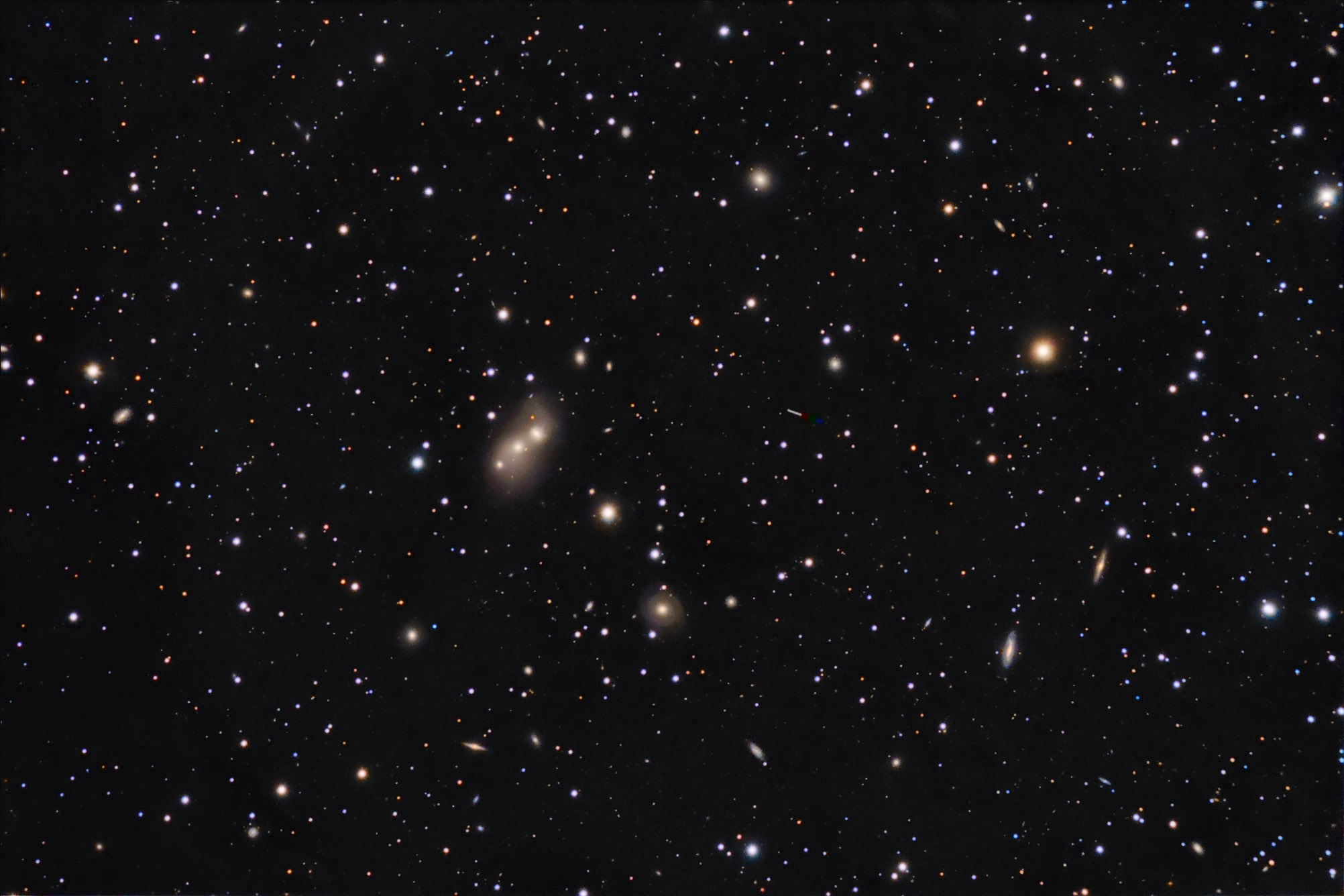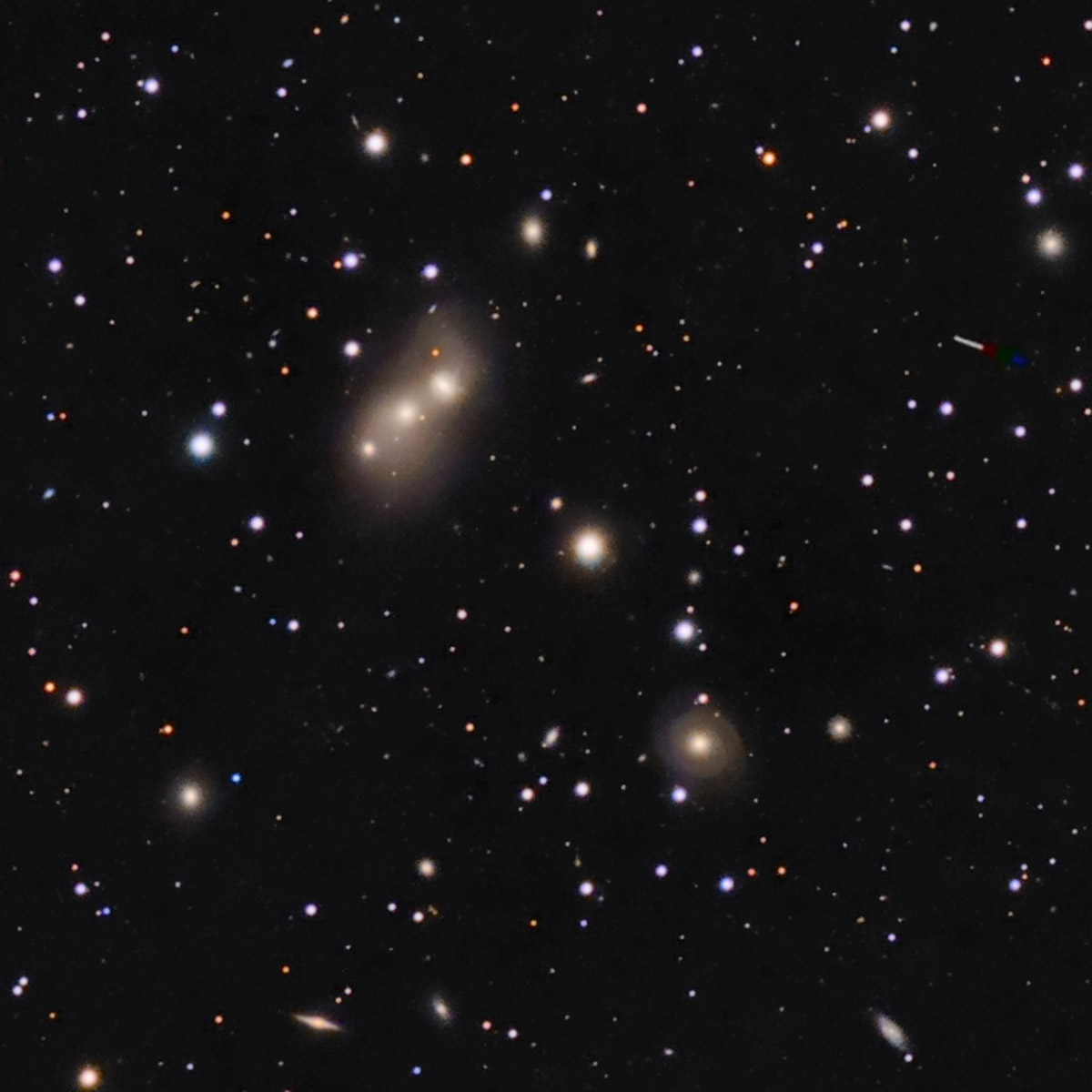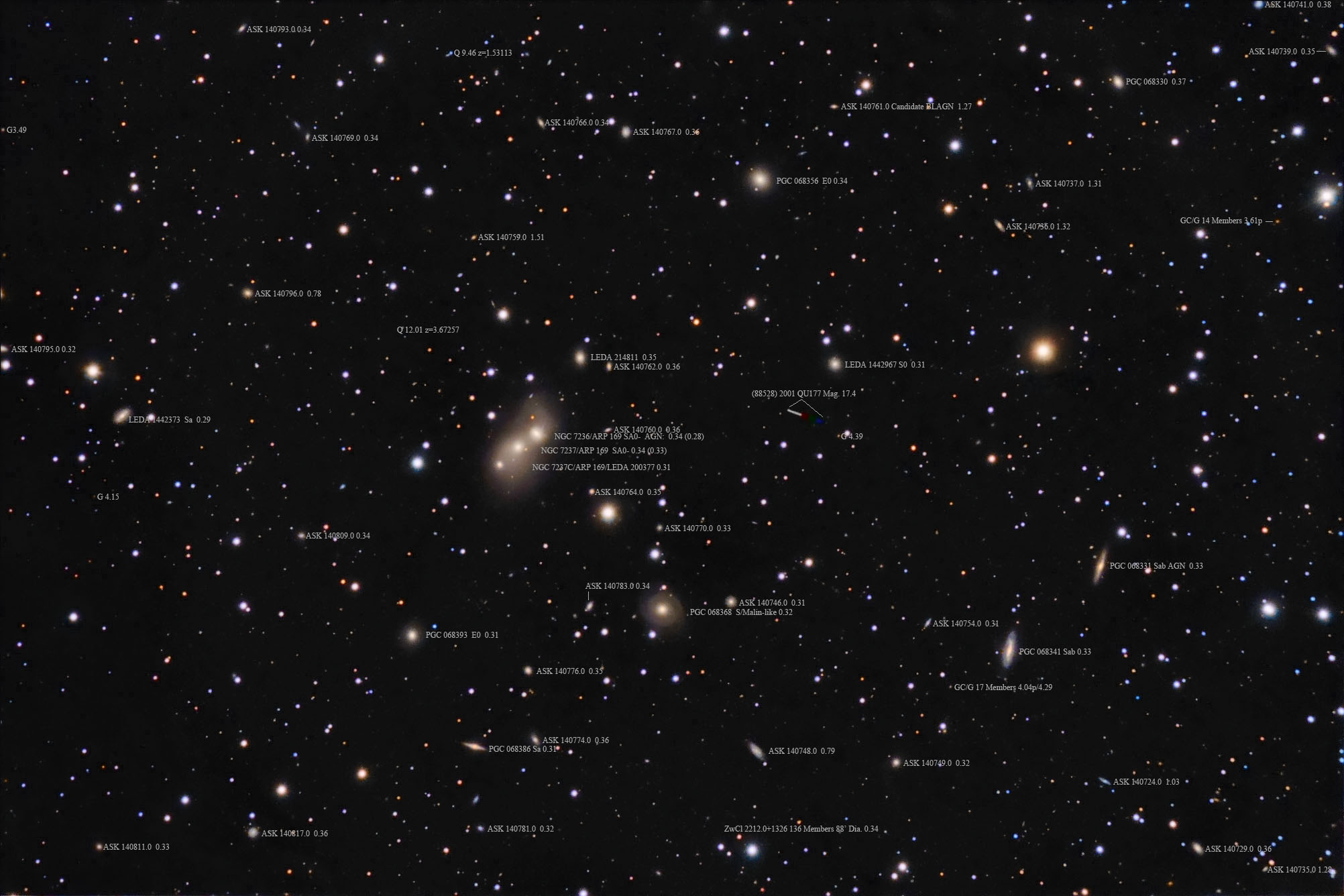| Description | Images |
Object name: ARP169Designation(s): ARP169, NGC7236, NGC7237, NGC7237C, Arp 169 is a trio of galaxies sharing a common envelope of stars, or at least they appear to. Redshift would put these at about 340 million light years. But studies using the D-sigma method which is often quite accurate when applied to elliptical galaxies put the distance much closer, say about 280 million light years. The group appears to be part of the ZWCl 2212.0+1326 galaxy cluster, a group of some 138 galaxies about 340 million light years distant. If so then the redshift distance to Arp 169 is probably correct. I suspect that the fact these are S0 galaxies and share a common halo has skewed the D-sigma calculation. Still, this galaxy cluster has galaxies with redshifts that match the D-sigma value as well. In any case its a ways from us. I've marked the approximate center of the cluster and its details on the annotated image. The center is just left of the annotation. Thus much of it is off the southwest portion of my image. It's size being 44' in radius fully covers my frame even this far off center. Related Designation(s):1RXS J221451.0+13:[MHE2006] a , 1RXS J221451.0+13:[MHE2006] b , 2MASS J22144498+1350474, 2MASS J22144687+1350271, 2MASS J22144878+1350006, 2MASX J22144500+1350476, 2MASX J22144877+1350006, 2MASXi J2214450+135047, 2MASXi J2214468+135026, 3C 442, 3C 442A, ARP 169, ARP 169 NED01, ARP 169 NED02, ARP 169 NED03, ARP169, ASK 140758.0, ASK 140763.0, CALIFA 883, CGCG 2212.3+1335, CGCG 2212.3+1335 NED01, CGCG 2212.3+1335 NED02, CGCG 2212.3+1335 NED03, CGCG 428-058, CGCG 428-058 NED01, CGCG 428-058 NED02, CGCG 428-058 NED03, CGPG 2212.3+1335, CGPG 2212.3+1335 NED01, CGPG 2212.3+1335 NED02, CGPG 2212.3+1335 NED03, Cul 2212+135, CXO J221445.0+135046, CXO J221446.9+135027, DA 576, HDCE 1183 NED004, II Zw 172, II Zw 172 NED01, II Zw 172 NED02, II Zw 172 NED03, KPG 564, KPG 564A, KPG 564B, LDCE 1507 NED006, LEDA 200377, LQAC 333+013 015, MCG +02-56-023, MCG +02-56-024, Mr18:[BFW2006] 02807 NED08, Mr18:[BFW2006] 02807 NED09, Mr18:[BFW2006] 02807 NED10, Mr19:[BFW2006] 05655 NED09, Mr19:[BFW2006] 05655 NED10, Mr20:[BFW2006] 10202 NED04, Mr20:[BFW2006] 10202 NED05, MRC 2212+135B, NGC 7236, NGC 7237, NGC 7237C, NGC7236, NGC7237, NGC7237C, NRAO 0681, NSA 024948, NSA 024951, NSA 149668, NYU-VAGC 0685404, OY +120, PGC 068383, PGC 068384, PKS 2212+13, PKS B2212+135, PKS J2214+1350, RGB J2214+138, RX J2214.8+1351, SDSS J221444.98+135047.4, SDSS J221444.99+135047.4, SDSS J221444.99+135047.5, SDSS J221446.88+135027.1, SDSS J221448.78+135000.6, SDSS J221448.78+135000.7, SDSS J221448.79+135000.7, SRGb 009.030, SRGb 009.031, SSTSL2 J221444.96+135047.6, SSTSL2 J221446.87+135027.2, SSTSL2 J221448.79+135000.5, UGC 11958, UGC 11958 NED01, UGC 11958 NED02, UGC 11958 NED03, USGC U810 NED03, UZC J221445.0+135047, WBL 678-005, [ATZ98] F054, [BFW2006] J333.68746+13.84650 , [BFW2006] J333.69536+13.84085 , [BFW2006] J333.70328+13.83351 , | Permanent link: https://images.mantrapskies.com/catalog/ARP-GALAXIES/ARP169-NGC7236-NGC7237-NGC7237C/ARP169L4X10RGB2X10X3R2.JPG |


